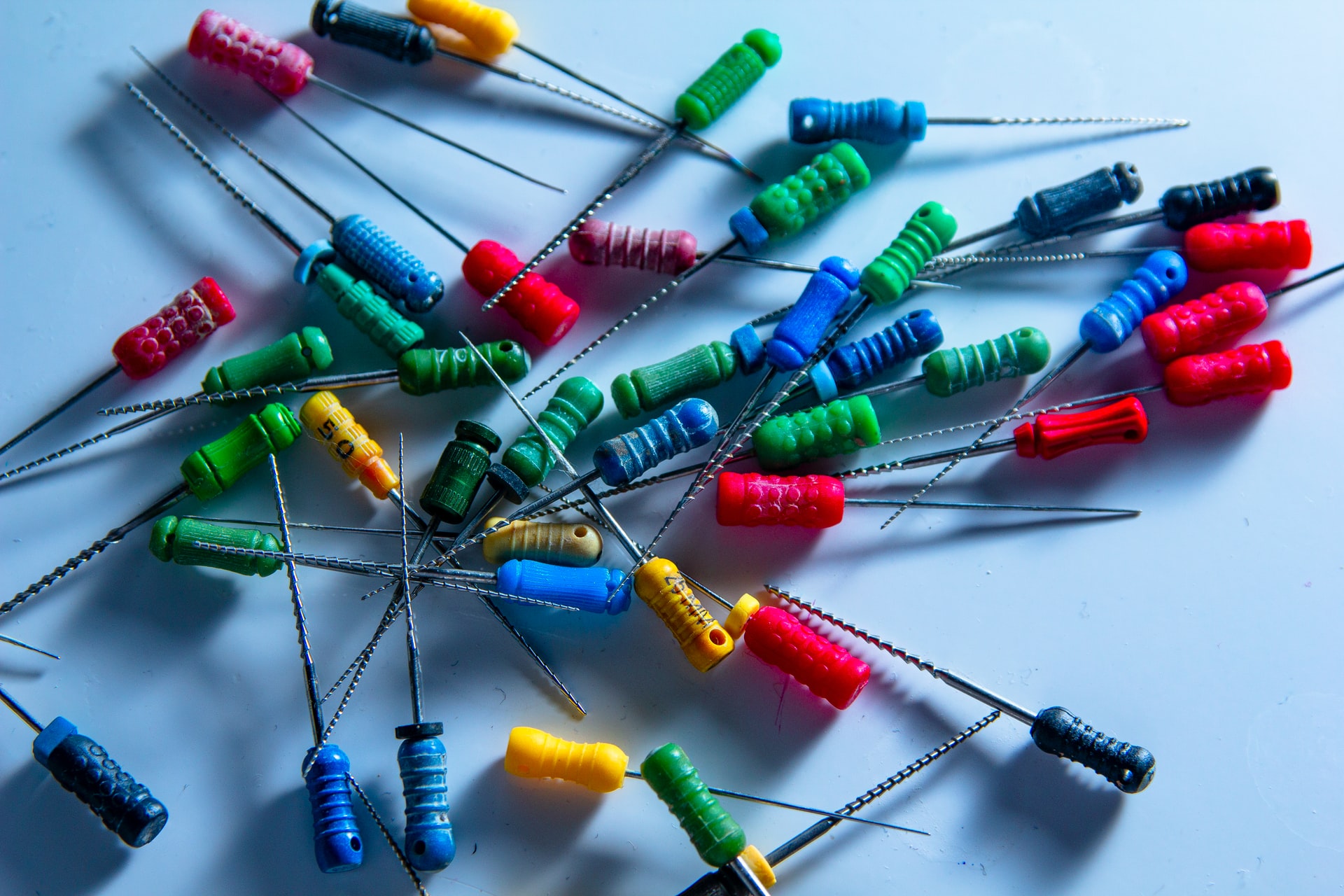Micro-sized nanorobots may provide a way of improving the success of root canal treatments in the future, according to recent research. The researchers found that the nanorobots were capable of thoroughly cleaning tooth canals – which eliminates bacteria in the area and therefore makes root canals more successful. This exciting finding could be helpful in the future for patients being treated with root canal treatments.
Recent research has found that micro-sized nanorobots could provide a way of improving the success of root canal treatments in the future. This could be excellent news for dental professionals and patients alike.
The researchers have proposed that the nanorobots could be controlled and manipulated through the use of a magnetic field – which would help them to clean specific areas within tooth canals.
By doing so, they should perform a deeper clean than is manually possible, and eliminating bacteria in the process. Therefore, this would have a positive impact when patients undergo root canal treatment.
Background
This research mainly focused on root canal treatment. Root canal treatment involves a dentist removing infected soft tissue inside the tooth (the pulp) [1]. The intention is for the dentist to typically flush the tooth with antibiotics to kill the bacteria that caused the infection.
But despite root canal treatments being very common, they aren’t always successful. In fact, recent research found that the average survival time of a tooth following a root canal is approximately 11 years [2].
Unfortunately, when the procedure is carried out manually, all of the bacteria is not always removed. Therefore, some bacteria survives and remains hidden inside canals in the tooth – called dentinal tubules.
Current techniques are not capable of cleaning deep into these canals – meaning that in many cases, bacteria is left behind. This can reduce the likelihood of a root canal treatment being successful, or cause problems in the future.
The Research
Finding a way of ensuring more bacteria is removed during a root canal has been difficult. But the researchers aimed to look into this topic further, and see if they could create a solution [3].
The research was conducted by a team at the Indian Institute of Science and a start-up from within the institute – Theranautilis [3]. Their findings were published in the Advanced Healthcare Materials journal [3].
The researchers had been working on ways of involving nanorobots in root canal treatments. They designed these nanorobots to be made of iron-coated silicon dioxide [3]. The researchers were then able to control the nanorobots by using a device capable of generating a low intensity magnetic field [3].
Extracted human teeth were used as samples to test out the method. The nanorobots were injected into the teeth, and had their movement tracked by the researchers. A microscope was used to observe their movement [3].
Crucially, the researchers found that they were able to make the nanorobots move as they wished by making slight changes to the frequency of the magnetic field. Therefore, the nanorobots were able to penetrate deep inside the dentinal tubules [3].
Then, the magnetic field could also be manipulated in a way to make the nanorobots generate heat. The heat had a strong effect on killing any bacteria in the area [3].
The researchers found that the nanorobots were capable of reaching 2,000 micrometers into the tooth – making them highly adept at reaching previously-unreachable areas of the dentinal tubules [3]. Therefore, these nanorobots offered results far superior to physical efforts from humans.
What this means
This research is very promising, and if it is rolled out around the world, could result in a vast improvement in root canal treatments. Therefore, it could result in many more teeth being kept alive for extra years.
The research team also used the teeth of rodents to test the nanorobots, and found them to be safe and effective [3]. Moreover, the fact that heat – rather than chemicals or antibiotics – are used, increases safety [4].
As mentioned earlier, the nanorobots can reach 2,000 micrometers – far superior to current results. For example, laser pulses that are commonly used have a penetrative distance of 800 micrometers [4].
One author spoke about their hopes for the future [4]. “We are very close to deploying this technology in a clinical setting, which was considered futuristic even three years ago”, one author commented [4].
The next step for the team is to put this into practice. They aim to develop a medical device that can easily fit inside the mouth, whilst allowing the dentist to inject and manipulate the nanorobots inside the teeth during a root canal treatment [4].
Thinking points…
1) Where possible, it is important to avoid needing to have root canal treatment. One of the main causes of needing this treatment is when a person leaves a cavity untreated. Cavities become bigger and bigger, and eventually result in an infection. Therefore, to avoid getting to this point, remember to get your teeth checked regularly and to get treatment when required. Consider booking an appointment now!
2) We talk a lot about interventions to treat dental issues. However, we should be looking at more preventive measures, rather than reactive. With this in mind, it is important to have excellent oral hygiene, and attend a dental clinic at least twice a year for a check-up. Combine this too with a healthy diet, and you should hopefully be able to avoid any treatment. Remember to continue brushing well, and attending appointments when needed!
What we offer at Taradale Dental
Taradale Dental is Calgary Dental Clinic that provide their patients with advice, a comfortable experience and treatment to improve oral health where needed.
Importantly, we recommend brushing your teeth at least twice a day and flossing regularly. Moreover, eating healthily and trying to avoid sugary foods and drink is helpful.
We advise our patients to attend our Calgary-based dental clinic twice a year for a regular dental check-up. When problems are detected, we have many treatments available. For instance, these include cavity fillings and root canals.
Here at Taradale Dental, we also have some cosmetic treatments available! These include dental implants, tooth whitening and Invisalign™! Many people find that these treatments have a positive impact on your appearance, confidence and self-esteem.
In addition, all of our services at our Calgary dental clinic Taradale Dental are in line with the Alberta Dental Fee Guide.
We would love you to visit our Taradale Dental clinic in Calgary! You can find out more about us by visiting our website https://taradaledental.ca.
References
[1] NHS. (2022). Root canal treatment. Available: https://www.nhs.uk/conditions/root-canal-treatment/. Last accessed: 10th June 2022.
[2] Thyvalikakath, T., LaPradd, M., Siddiqui, Z., Duncan, W. D., Eckert, G., Medam, J. K., Rindal, D. B., Jurkovich, M., & Gilbert, G. H. (2022). Root Canal Treatment Survival Analysis in National Dental PBRN Practices. Journal of Dental Research. (Pre-publication issue). DOI: https://doi.org/10.1177/00220345221093936.
[3] Dasgupta, D., Peddi, S., Saini, D. K., & Ghosh, A. (2022). Mobile Nanobots for Prevention of Root Canal Treatment Failure. Advanced Healthcare Materials. (Online pre-publication issue). DOI: https://doi.org/10.1002/adhm.202200232.
[4] Raghunath, R. (2022). Tiny bots that can deep clean teeth. Available: https://medicalxpress.com/news/2022-05-tiny-bots-deep-teeth.html. Last accessed: 10th June 2022.




[…] Micro-Sized Nanorobots May Provide a Way of Improving the Success of Root Canal Treatments in the Future, According to Recent Research. Click to Know More! […]